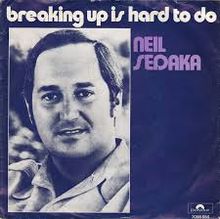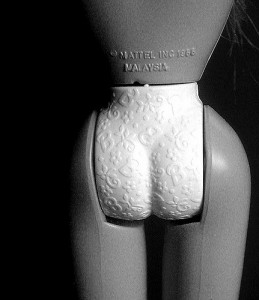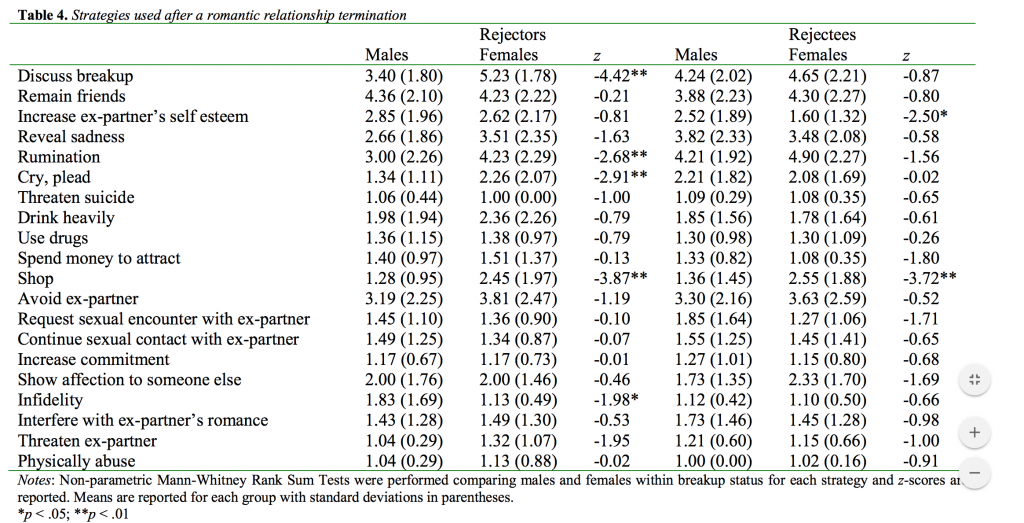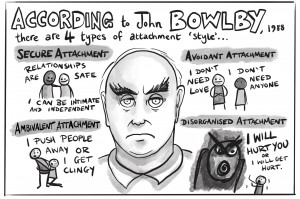1. KARMA KARMA DOWN, DOOBIE-DO, DOWN DOWN?

On 20 September, 1812, the 24 year-old poet and libertine Lord Byron opened a letter from a married woman, 27 year-old Lady Caroline Lamb, with whom he’d been amorously involved for a period of time.
The love affair had been terminated by Byron and his need for fresh dalliances. He had recently turned his attentions to the petite, apple-cheeked Anne Isabella Milbanke, who would later become Mrs Byron, and the mother of Ada Lovelace (the first female computer programmer, you may recall).

Lady Caro had been dispatched of by Lord B. in this manner:
“I am no longer your lover; and since you oblige me to confess it, by this truly unfeminine persecution,—learn, that I am attached to another; whose name it would of course be dishonourable to mention….I offer you this advice, correct your vanity, which is ridiculous; exert your absurd caprices upon others; and leave me in peace.”
But she wouldn’t, or couldn’t leave him in peace, and alongside her response, signed “from your Wild Antelope”, she also sent him a small locket, inside which Byron discovered bloodied clumps of his former lover’s pubic hair.
The missive accompanying the pubes tried to explain the thinking behind her gift, as well as asking him for a reciprocal gesture, framed somewhat in the key of faux-care:
 “I asked you not to send blood but yet do—because if it means love, I like to have it. I cut the hair too close & bled much more than you need—do not do the same & pray put not scissors points near where quei capelli grow. Sooner take it from the arm or wrist—pray be careful.”
“I asked you not to send blood but yet do—because if it means love, I like to have it. I cut the hair too close & bled much more than you need—do not do the same & pray put not scissors points near where quei capelli grow. Sooner take it from the arm or wrist—pray be careful.”
This letter is a masterclass in the tangled, mixed-message mess of how as human beings we negotiate the terrain of love-in-crisis, as well as the kind of dramatic behaviour that commonly marks the end of a relationship.
Whatever you might think about this particular post-break up communique, perhaps we can all agree that Lady Caro was most likely exhibiting some of the symptom of what I shall henceforward refer to as Break-Up Mania (B.U.M).

Alongside the infamous too-close depilation incident, other symptoms of B.U.M might include self-medicating with large quantities of laudanum, showing up at your ex’s apartment disguised as a male page in order to spy on him, slashing your wrists with a broken wine-glass, as well as a protracted series of even more creative acts, most notably Lamb’s roman à clef, Glenarvon.
Glenarvon was published in 1816 and told the story of a rakish cad, Lord Ruthven, a habitual seducer of women, who meets his end pursued by the devil, haunted by the women he wronged. Bryon, commenting on the book, questioned whether it was a kiss-and-tell, or more likely a “fuck and publish”. Whichever it was, Glenarvon went on to become something of a bestseller in the year 1816.
2. IS B.U.M PATHOLOGICAL?

Break-Up Mania as my somewhat tongue-in-cheek acronym suggests lies along a spectrum, which for the most part can be filed under “standard operating procedures” in the Handbook of Being Human.
On its gentler manic slopes we find a young man writing a letter to an Online Agony Aunt (in this case, Cheryl Strayed’s Dear Sugar) in which he enquires: “How do you get over a break up? How do you cope with that amount of pain, logistical nightmares, and abject sadness?”
Further along, we get the more emotionally fraught exchanges between Rejector and Rejectee: those lovelorn, self-pitying, wheedling, second-chance begging text messages/letter/emails we’ve all sent at some point or another to an ex, accompanied by whatever the modern-day equivalent might be of a pubic hair filled locket.
 Maybe some form of sexting? Or perhaps a podcast, such as The Berlin Patient in which Joel White plays some of the audio files he sent his ex girlfriend after their break up? In the podcast, White invites his contemporary Greek Chorus (made up predominantly of friends but also consisting of a polyamory-espousing French novelist, and his therapist, me) to weigh in on his actions.
Maybe some form of sexting? Or perhaps a podcast, such as The Berlin Patient in which Joel White plays some of the audio files he sent his ex girlfriend after their break up? In the podcast, White invites his contemporary Greek Chorus (made up predominantly of friends but also consisting of a polyamory-espousing French novelist, and his therapist, me) to weigh in on his actions.
White’s deconstruction of B.U.M is, to my ears, a fascinating five hour long spoken-word riff on Neil Sedaka’s two minutes of oxymoronic breakup pop: both happy-sad, healthy-sick, painful-blithe, a weirdly spontaneous overflow of powerful feelings recollected in tranquillity. And not just recollected: repackaged, reformulated, reconstitued even.
Why not have a toke of the two-minute version right now:
I think what makes this most affecting is the the polyphonic nature of the vocals. A rare moment of the tragic hero and his elucidatory Chorus all singing from the same hymn sheet. As if Sedaka were expressing B.U.M for all of us – which of course he is.
A few clicks away from creative sublimation, we also have some of the further reaches of the B.U.M spectrum in more extreme and obsessive forms behaviours: self-harming, surveillance and stalking, verbal and physical abuse, wilful damage of personhood or property. Such as acid poured over one’s lover’s car, or a beloved children’s pets finding its way into a stock pot. You may recognise the latter descriptions as that of the 20th Century version of the Lady Caroline archetype”: Alexandra “Alex” Forrest, played by Glen Close in the 1987 Adrian Lyne Film Fatal Attraction.

But lest we fall into the gendered Venus-Mars shaming trap of believing that the outer-reaches of B.U.M are either populated by hysterical women or dangerous, stalky men, recent research on strategies used after romantic relationship termination, shows that the genders are pretty much neck-and-neck in their embodiment of B.U.M.
Have a look at the following summary in the table below (from Buss and Perilloux’s 2008 article “Breaking Up Romantic Relationships”).
As you would expect, there is a different between the strategies and emotions felt by Rejector and Rejectee. But very little difference in terms of Rejectee behaviour, particularly along gender lines, even in terms of threatening behaviours and physical abuse:

So although there is comedy to be had from the somewhat shame-driven contours of The Berlin Patient, which can’t help but at times fall into the Mars-Venus trap, what interests me more about the project is Joel’s attempt to tackle the million dollar question underpinning his/our B.U.M, which is: why do we put ourselves and other people through this kind of stuff?
It’s a question he puts to me in one of our therapy sessions. Here’s my attempt to answer it.
3. WHY BREAKING UP IS HARD TO DO

When mania – extreme behaviour, stemming in most cases from profound forms of suffering – follows a break-up, what is actually being broken-up we might ask?
Mania doesn’t follow a sundering of all our relationships: the move from one mobile provider to another, the losing of a follower on Twitter or a friend on Facebook (although this can take some of us to the brink too). What breaks when we are told that a lover, or a partner no longer wants to be with us anymore?
At a psychic level we could say that at one level, everything breaks down (for some of us) at this moment: our world, and all our emotional bearings. These emotional bearings, or rather the map on which we find our bearings, might be described in psychological terms, as our Attachment Map.
As babies, we are weak and vulnerable, our first attachment figures (generally speaking: our mothers and fathers) hold our lives in their hands. Quite literally. Without their constant care and attention, we wouldn’t get to the point where we can function as emotionally mature, independent human beings. Attachment is a kind of unconscious contract which most parents might not even realise they’re signing, a contract also filed under the term “love”, wherein our caregivers take on the evolutionary burden of looking after us physically as well as emotionally so that their genes packaged deep inside us, might have a chance of flourishing beyond their demise.

The primacy of this contract is what lies I think at the heart of a certain type of black humour concerning parental abuse and infant mortality, in the form of of the “dead baby joke”. Here’s one from Anthony Jeselnik’s recent set:
“You don’t know anything about pain until you’ve seen your own baby drown in a tub. And you definitely don’t know anything about how to wash a baby.”
These jokes work for Jeselnik’s audience in an edgy, uncomfortable way because, taking account of Benign Violation Theory, an abused, neglected baby is seen by all of us an extreme violation of social and moral norms. Just as long as we can believe that Jeselnik himself would never actually carry out these acts himself. Consider the difference in reception of these accounts in a Baby P or Victoria Climbié trial.
So, what you might ask has this got to do with adults breaking up? Well, the idea goes that the template of attachment set by ourselves and our parents gets reinstated or replayed to some extent when we fall in love and glom onto a new adult attachment figure. In this way, how we respond to a break up, depends upon our early attachment history, but also our evolutionary history as a species. Either way, it may, quite understandably for our inner-child elements, present itself a devastating emergency.
When Neil Sedaka croons in his breakup ditty “Don’t you leave my heart in misery./’Cause if you go, then I’ll be blue” the pop song cliche’ takes on a different quality if we imagine that this cry might be the message imprinted into every baby’s wail when its parents leave it alone in a dark room to fend for itself.
As babies we don’t have the cognitive abilities know whether we’re lying in a crib with radiators set at just the right temperature for us, and a monitor scanning our every fart or burp, or instread we’re just another infant in that 25 million year evolutionary tale lying on the floor of the forest, whilst distracted Mum wanders off in search of pine-nuts. If she doesn’t come back when we scream, we may indeed be rendered “blue” not just as in sad and upset, but dead. Hypothermia, asphyxiation, or just being eaten by another hungry animal. There is a part of B.U.M which is always at this catastrophic pitch. Nicely summed up by those other philosophers of the breakup: Gamble, Huff, and Gilbert. “Don’t leave me this way,/I can’t survive, I can’t stay alive/Without your love.”
So the mania, in whatever form it takes at the end of a relationship is perhaps akin to that primal scream. If you don’t come back, I might die. Or at least it feels that way.
Sometimes that scream is a little bit more sophisticated or creative (Freud calls this sublimation). We see this in Joel White’s audio letters and his podcast, in every pop star’s breakup album, and even in Lady Caroline Lamb’s Glenarvon. They’re all consciously, but mainly unconsciously, designed to hook the listener (our ex, or someone new?) into continuing, or restarting a conversation with us; all conversation being the seed of a relationship that we may wish to reclaim, or at least make sense of.
Depending on our attachment style (as human beings we seem to be pretty evenly split between those who have a secure versus an insecure attachment style), a break up can feel either like a life-threatening abandonment, or a painful but recoverable upset. The difference being I think lies in whether the breakup registers as an intolerable threat to the inner-child parts of our psyche, or something we can work with.

Secure attachment stragies – which even us insecure bods can learn although it will take a concerted effort to do so – might allows us even in the darkest depths of the breakup, to still find a way to connect with those other more adult part of ourselves (our own Inner Parents). These can continue to take care of our vulnerable inner-tots even as we struggle with what’s befallen us.
So how might this look in practical terms?
4./ RECOVERING FROM B.U.M

I’ll keep this brief, because I think Inner-Parenting or reconnecting with Self is a very personal journey.
For one person it might be throwing themselves into a year-long creative project like Joel’s Berlin Patient Podcast. For another person, it’s baking, or gardening, or thrash metal.
Or therapy.
Yes, this might be a good time to talk with someone in a constructive, non-shaming way about your relationship history, maybe going all the way back to your first relationships, not those elementary school crushes per se (but those too), but rather the 18-year plus “marriage” we all have had with our parents, and continue to have.

When I work with someone on this theme, I like to combine exploration of attachment style and relationship history with an eye to all the “parts” generated from our experiences as an internal family system, along with a here-and-now value-driven focus in just what it is you plan to do with your one wild and precious life?
Remember the guy (or maybe it was a gal -no matter) who wrote to Cheryl Strayed Strayed’s Agony Aunt Sugar wondering how to “get over” a breakup (“How do you cope with that amount of pain, logistical nightmares, and abject sadness?”) Here’s what she wrote back:

“You let time pass. That’s the cure. You survive the days. You float like a rabid ghost through the weeks. You cry and wallow and lament and scratch your way back up through the months. And then one day you find yourself alone on a bench in the sun and you close your eyes and lean your head back and you realize you’re okay.”
Strayed’s pithy but heartfelt response suggests it’s more a case of getting through rather than getting over. As hard as that is to swallow, I think it’s true, but that doesn’t mean that one has to be a passive passenger on the B.U.M ride.
There’s music to listen to, books to read, films to watch, poems to learn by heart and intone whilst walking in nature, and a whole bunch of other things to do along the way. If you’re going through a breakup at this very moment, maybe time to go and find some soul food that works for you.
Time to do something nice for yourself and that wailing inner infant. Good luck in getting the kind of healing you need.
